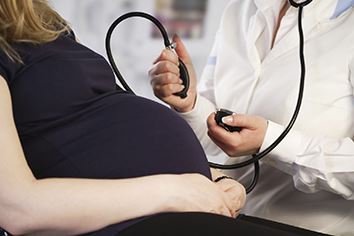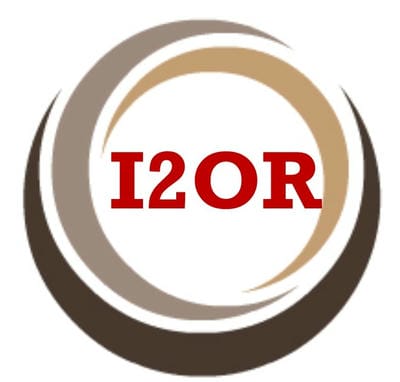Comparison of Maternal and Perinatal Outcome Of Gestational Diabetes Mellitus With And Without Preeclampsia Patient
Abstract
Background: Gestational diabetes mellitus (GDM) and preeclampsia share many risk factors, e.g., gestational weight gain. Gestational diabetes mellitus (GDM) and preeclampsia are two dangerous pregnancy complications and their coexistence further increases adverse maternal and perinatal outcome.
Methods: It was a cross sectional analytical study. Patients were divided into 2 groups: group I (n=75) included GDM with preeclampsia and group II (n=75) include GDM without preeclampsia. Data was collected by history taking, examinations and required investigations and recorded in a predesigned data collection instrument. and assured that the information and records would be kept confidential. Data were processed and analyzed using computer software SPSS version 22.
Results: Majority, 66.7% among the respondents of group I did not have anemia, 30.7% had mild and only 2.7% had moderate anemia. 86.7% among the respondents of group II did not have anemia, 12.0% had mild and only 1.3% had moderate anemia which was statistically significant (p<0.05). Mean BMI in both group I (31.87± 5.93) and II (31.16 ± 4.72) was not statistically significant (p≥0.05). All (100.0%) among group I and in group II most of the respondents, 90.7% had LUCS and none of group I, only 9.3% in group II had NVD both were statistically significant (p=.013). A non-significant difference was observed in regards of maternal outcome where in group I, had 16.0% oligohydramnios, 4.2% polyhydramnios and 1.3%, PPH, in group II had 12%, oligohydramnios, 4.2% polyhydramnios and none of PPH. In group I majority, 64.0% had preterm delivery and in group II, 41.3% had preterm delivery which was statistically significant. In group I, 5.3% and none of group II had IUD which was statistically significant (p<0.05) A nonsignificantdifference was observed in regards of asphyxia where in group I asphyxia of baby was higher (10.7%) than that of group II, 4.0%.
Conclusion: Preeclampsia is one of the leading causes of maternal and perinatal morbidity and mortality world-wide. In GDM with preeclampsia LUCS, preterm delivery and IUD were higher in comparison of patients in GDM without preeclampsia.
Downloads
References
2. Carolan, M., Davey, M.-A., Biro, M. A. & Kealy, M. 2012. Maternal age, ethnicity and gestational diabetes mellitus. Midwifery, 28, 778-783.
3. Bardenheier, B. H., Elixhauser, A., Imperatore, G., Devlin, H. M., Kuklina, E. V., Geiss, L. S. & Correa, A. 2013. Variation in prevalence of gestational diabetes mellitus among hospital discharges for obstetric delivery across 23 states in the United States. Diabetes care, 36, 1209-1214.
4. Eiland, E., Nzerue, C. & Faulkner, M. 2012. Preeclampsia 2012. Journal of pregnancy, 2012.
5. Al-Jameil, N., Khan, F. A., Khan, M. F. &Tabassum, H. 2014. A brief overview of preeclampsia. Journal of clinical medicine research, 6, 1.
6. Obstetricians, A. C. O. & Gynecologists 2013. Hypertension in pregnancy. Report of the American College of Obstetricians and Gynecologists' task force on hypertension in pregnancy. ObstetGynecol, 122, 1122-1131
7. Jesmin, S., Akter, S., Akashi, H., Al-Mamun, A., Rahman, M. A., Islam, M. M., Sohael, F., Okazaki, O., Moroi, M. & Kawano, S. 2014. Screening for gestational diabetes mellitus and its prevalence in Bangladesh. Diabetes research and clinical practice, 103, 57-62.
8. Arulkumaran, N. &Lightstone, L. 2013. Severe pre-eclampsia and hypertensive crises. Best Practice & Research Clinical Obstetrics &Gynaecology, 27, 877-884.
9. Chen, D.-B. & Wang, W. 2013. Human placental microRNAs and preeclampsia. Biology of reproduction, 88, 130, 1-11.
10. Calkins, K. &Devaskar, S. U. 2011. Fetal origins of adult disease. Current problems in pediatric and adolescent health care, 41, 158-176.
11. Wikström, A.-K., Svensson, T., Kieler, H. &Cnattingius, S. 2011. Recurrence of placental dysfunction disorders across generations. American journal of obstetrics and gynecology, 205, 454. el-454. e8.
12. Jin, W.-Y., Lin, S.-L., Hou, R.-L., Chen, X.-Y., Han, T., Jin, Y., Tang, L., Zhu, Z.-W. & Zhao, Z.-Y. 2016. Associations between maternal lipid profile and pregnancy complications and perinatal outcomes: a population-based study from China. BMC pregnancy and childbirth, 16, 1-9.
13. Dirar, A. M. &Doupis, J. 2017. Gestational diabetes from A to Z. World journal of diabetes, 8, 489.
14. Nunes, J. S., Ladeiras, R., Machado, L., Coelho, D., Duarte, C. & Furtado, J. M. 2020. The influence of preeclampsia, advanced maternal age and maternal obesity in neonatal outcomes among women with gestational diabetes. RevistaBrasileira de Ginecologia e Obstetrícia, 42, 607-613.
15. JasovicSiveska, E. &Jasovic, V. J. E. G. 2015. Obstetric History and Risk for Mild and Severe Preeclampsia. EC Gynaecology, 1, 73-80.
16. Staribratova, D., Zaprianov, Z. &Milchev, N. J. A. I. G. 2004. Socio-economic characteristics of pregnant women with preeclampsia: a gypsy’s population survey. Europe PMC, 43, 10-13.
17. Baev, O., Shelekhin, A. J. E. J. O. O., Gynecology & Biology, R. 2022. Maternal and perinatal outcomes of pregnancies complicated by preeclampsia. European Journal of Obstetrics and Gynecology and Reproductive Biology, 270, e120.
18. Nahar, F. T., Shermin, S., Begum, F. & Chowdhury, T. J. B. M. J. 2022. Maternal and perinatal outcome of pre-eclampsia in patients with gestational diabetes mellitus. Birdem Medical Journal, 12, 106-110.
19. Jesmin, S., Jahan, S., Khan, M., Sultana, N., Jerin, J., Habib, S. & Paul, D. J. B. M. J. 2011. The incidence, predisposing factors, complications and outcome of preeclampsia in diabetic pregnancy. Birdem Medical Journal, 1, 10-14.

Copyright (c) 2024 Author (s). Published by Siddharth Health Research and Social Welfare Society

This work is licensed under a Creative Commons Attribution 4.0 International License.


 OAI - Open Archives Initiative
OAI - Open Archives Initiative



















 Therapoid
Therapoid

